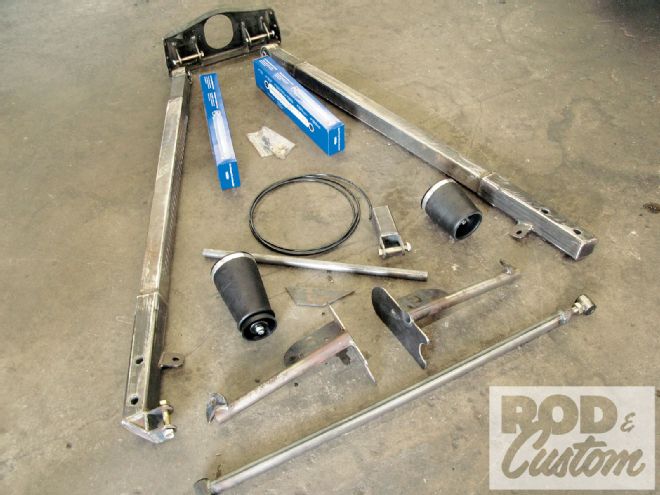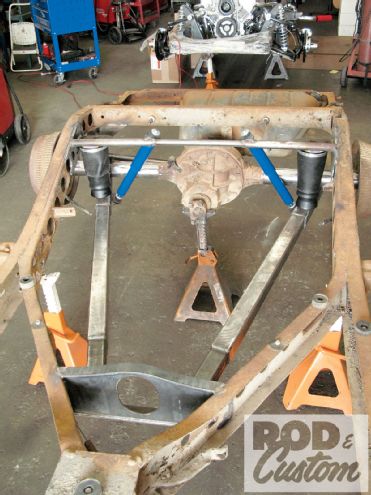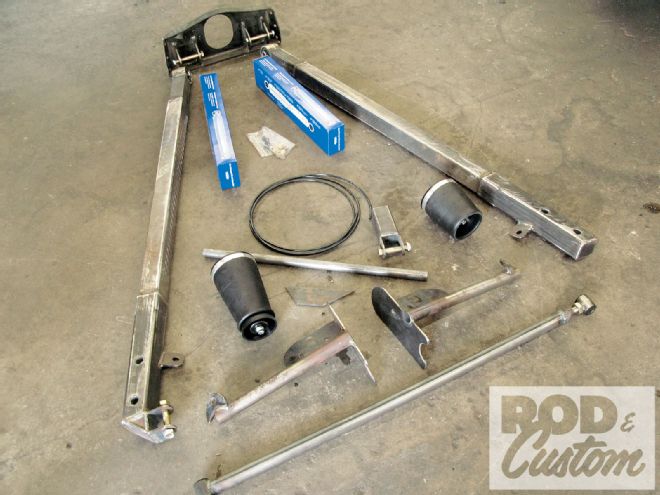
I'm a big fan of trailing arm rear suspension, especially under customs. Not only does it offer a smooth ride with great handling and traction, but there are no upper arms to worry about, or even the upper section of a ladder bar. This means they'll fit under the floor of a custom with minimal or no modifications, especially advantageous when dealing with low cars with scant room underneath! I've installed this setup a couple of times, including on the Rod & Custom project '49 Chevy. This type of suspension also has the benefit of no wheel hop, unlike the parallel leaf systems they usually replace, and is the type of setup widely used in NASCAR racing. It's rugged, simple, and it plain works.

No Limit Engineering also likes the trailing arm system, offering a number of kits for '37-57 Chevy cars as well as '47-54 Chevy pickups, available with airbags or coilover shocks. They recently undertook a trailing arm install on a '51 Mercury chassis belonging to No Limit Owner Rob MacGregor, and while previous kits have used Chevy pickup arms, and even fabricated tubular arms, No Limit Engineering kits will use the box section arms, as shown here, in the future. In addition to being adjustable (before they're welded) for length depending on application, the box section arms eliminate the need to transition from a tube to a flat section for the axle mounting pad, but also offer more rigidity when it comes to axle wrap, reducing the possibility of pinion angle change under acceleration and braking.
 With the exception of the replacement rearend and axle saddles, here's everything required to swap the Merc over to airbag-equipped trailing arms.
With the exception of the replacement rearend and axle saddles, here's everything required to swap the Merc over to airbag-equipped trailing arms.
The comprehensive kit comprises the trailing arms, axle saddles and U-bolts, Panhard rod and brackets, shock absorbers, airbags, front and rear mounting crossmembers and hardware. Though obviously easier to install on a bare frame, there's no reason this job couldn't be undertaken with the body in place, and with the exception of a new driveshaft and brake plumbing, should be an easy weekend project, offering improved ride quality, air suspension, updated brakes, and modern wheel stud pattern all in one fell swoop.